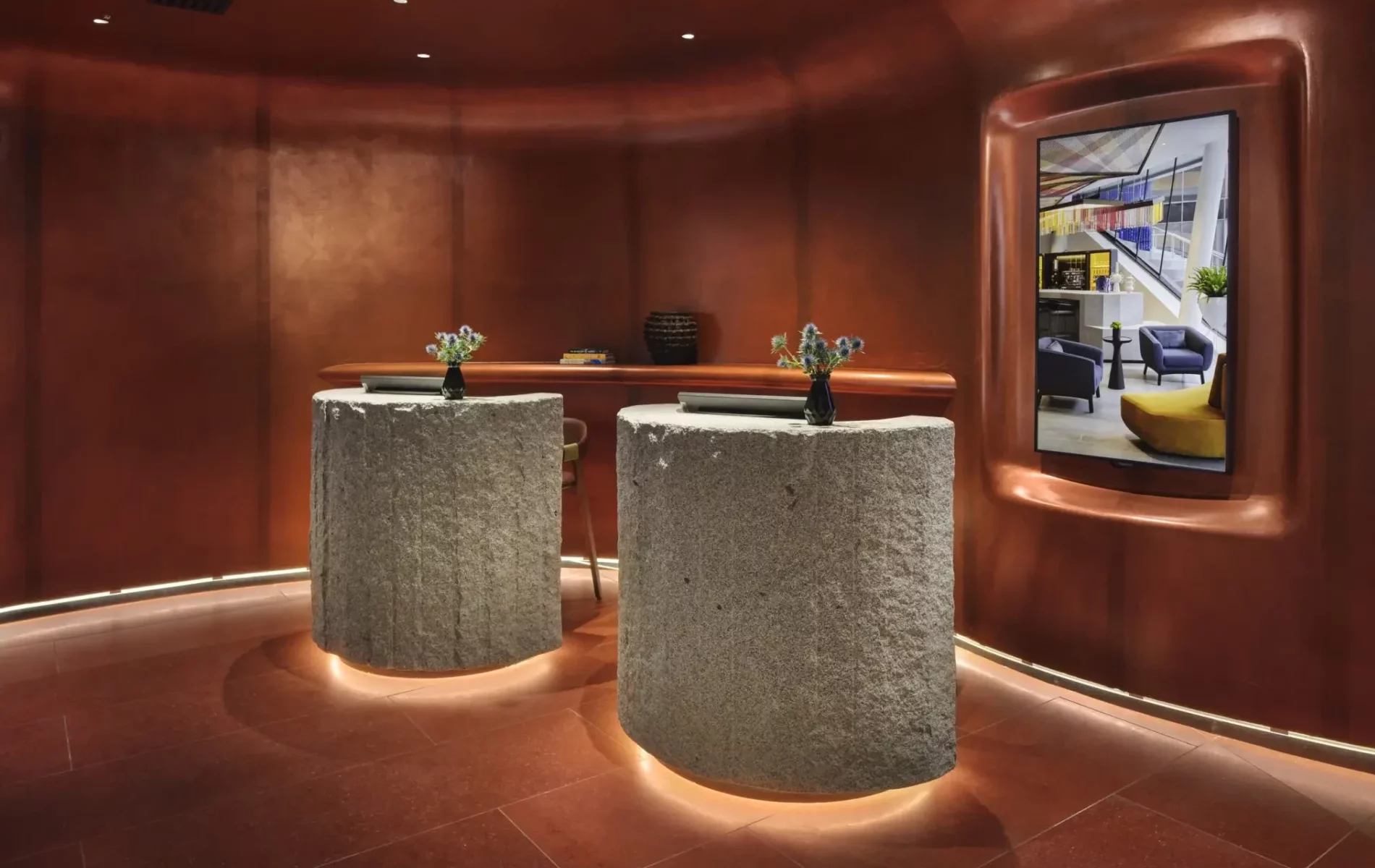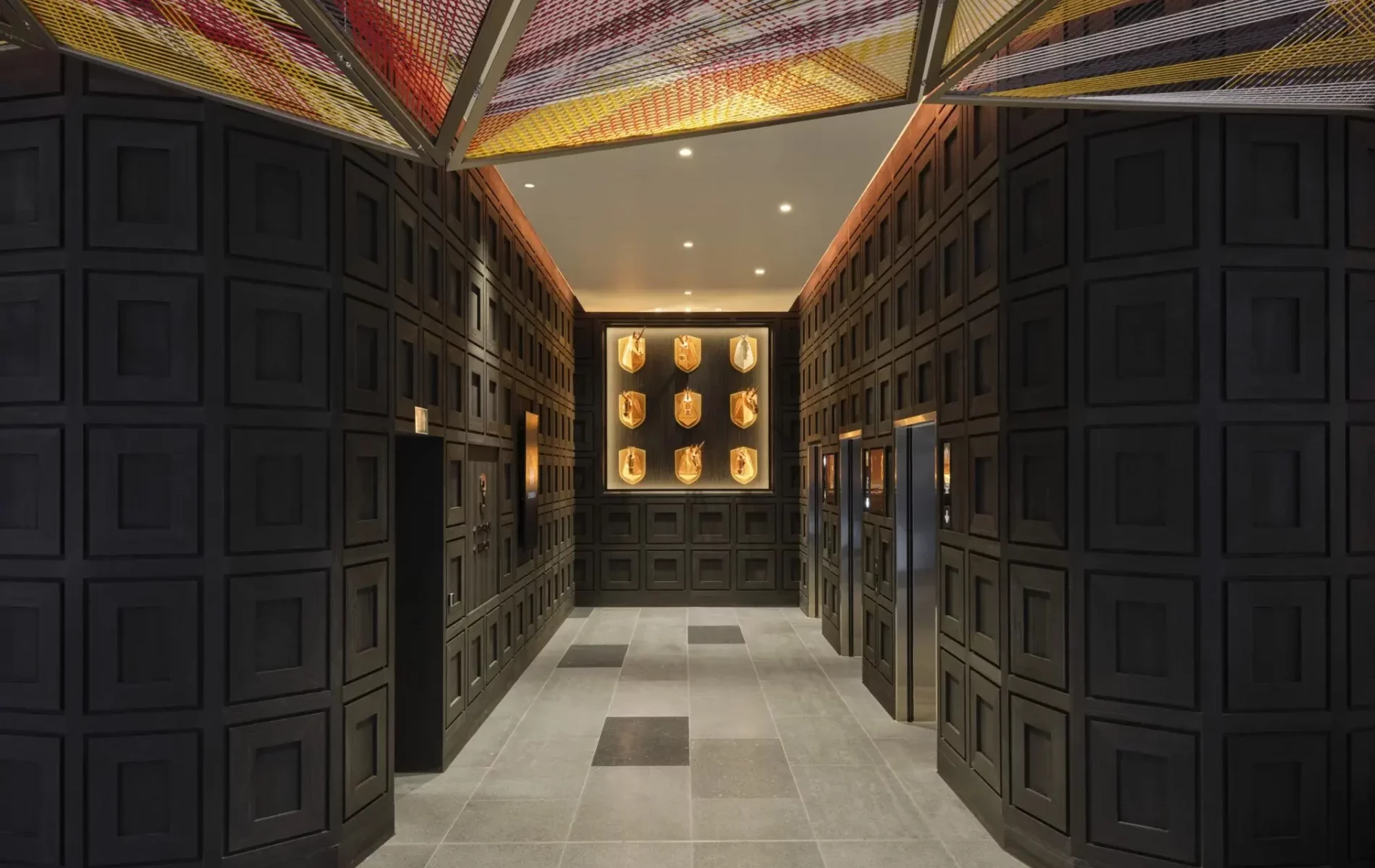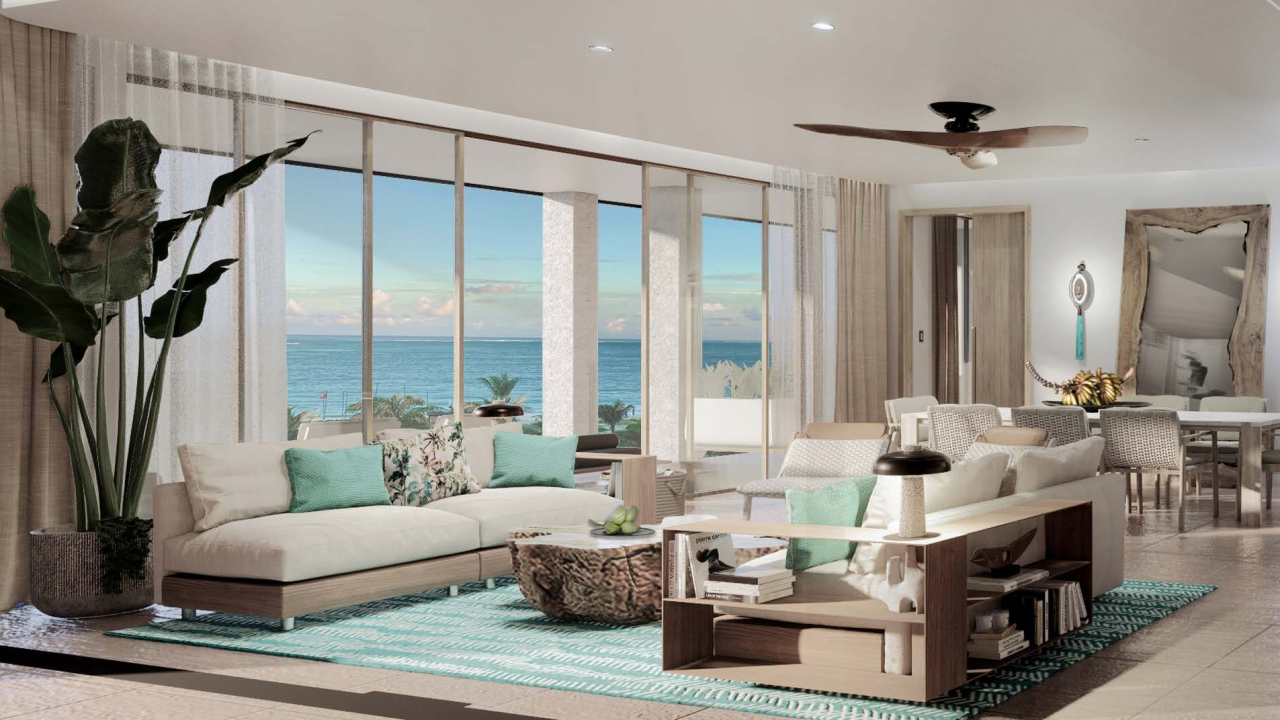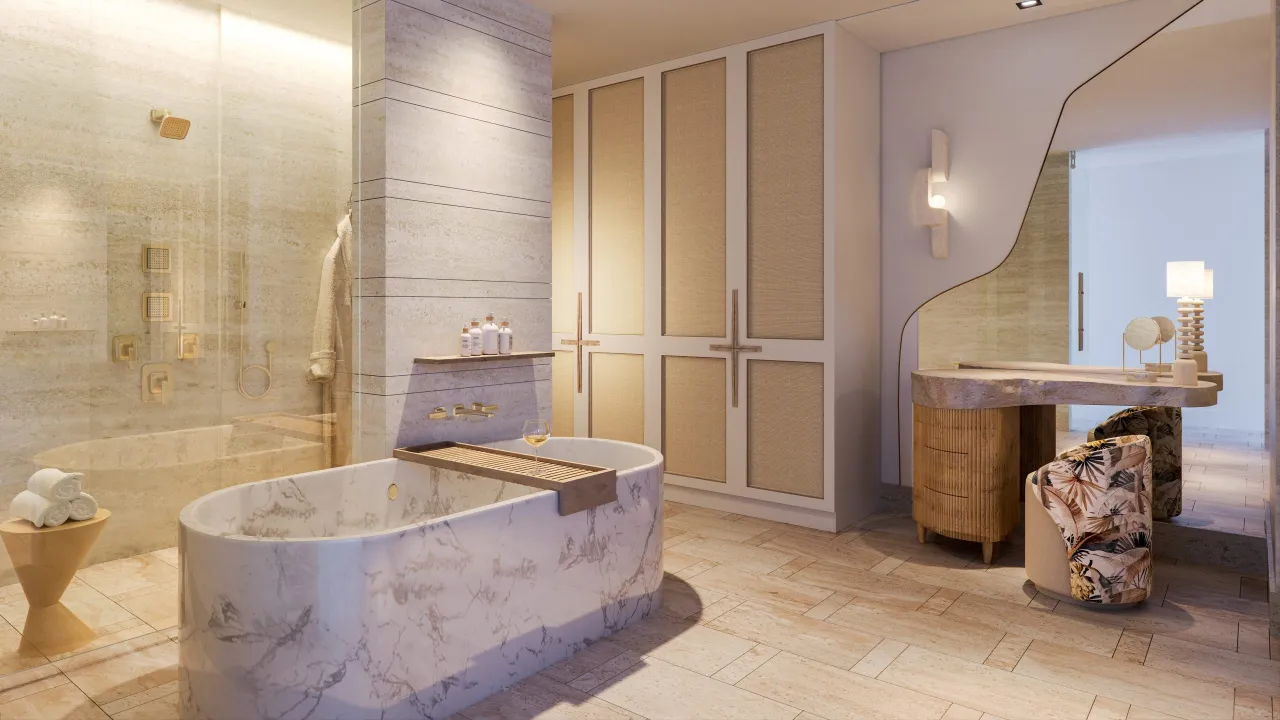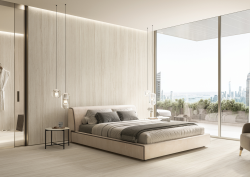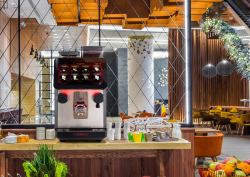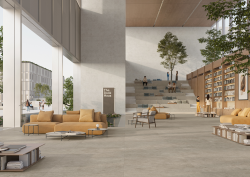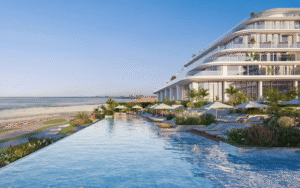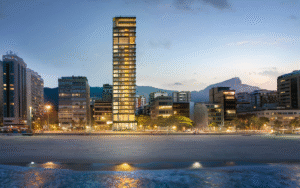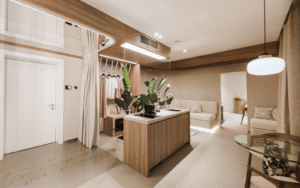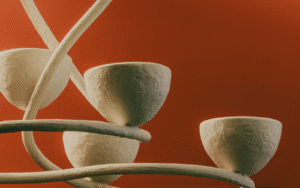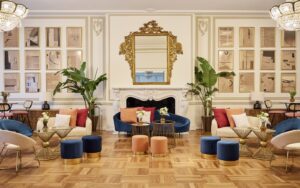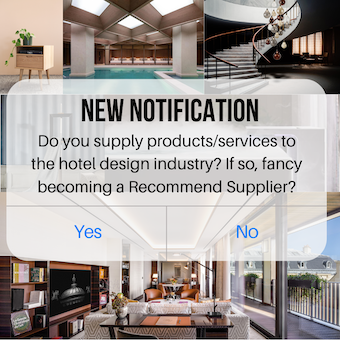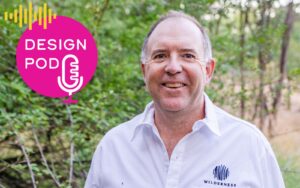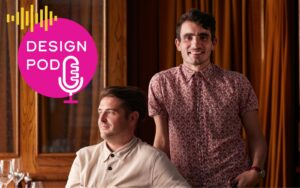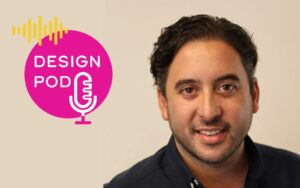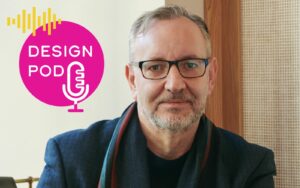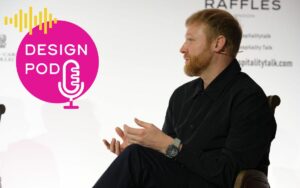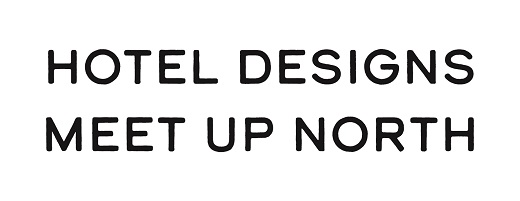During a recent conversation, hosted by Hotel Designs Editor Sophie Harper, in partnership with Atlas Concorde, global design and supply experts discussed their practices for capturing local authenticity on international projects. Here’s what we discovered…
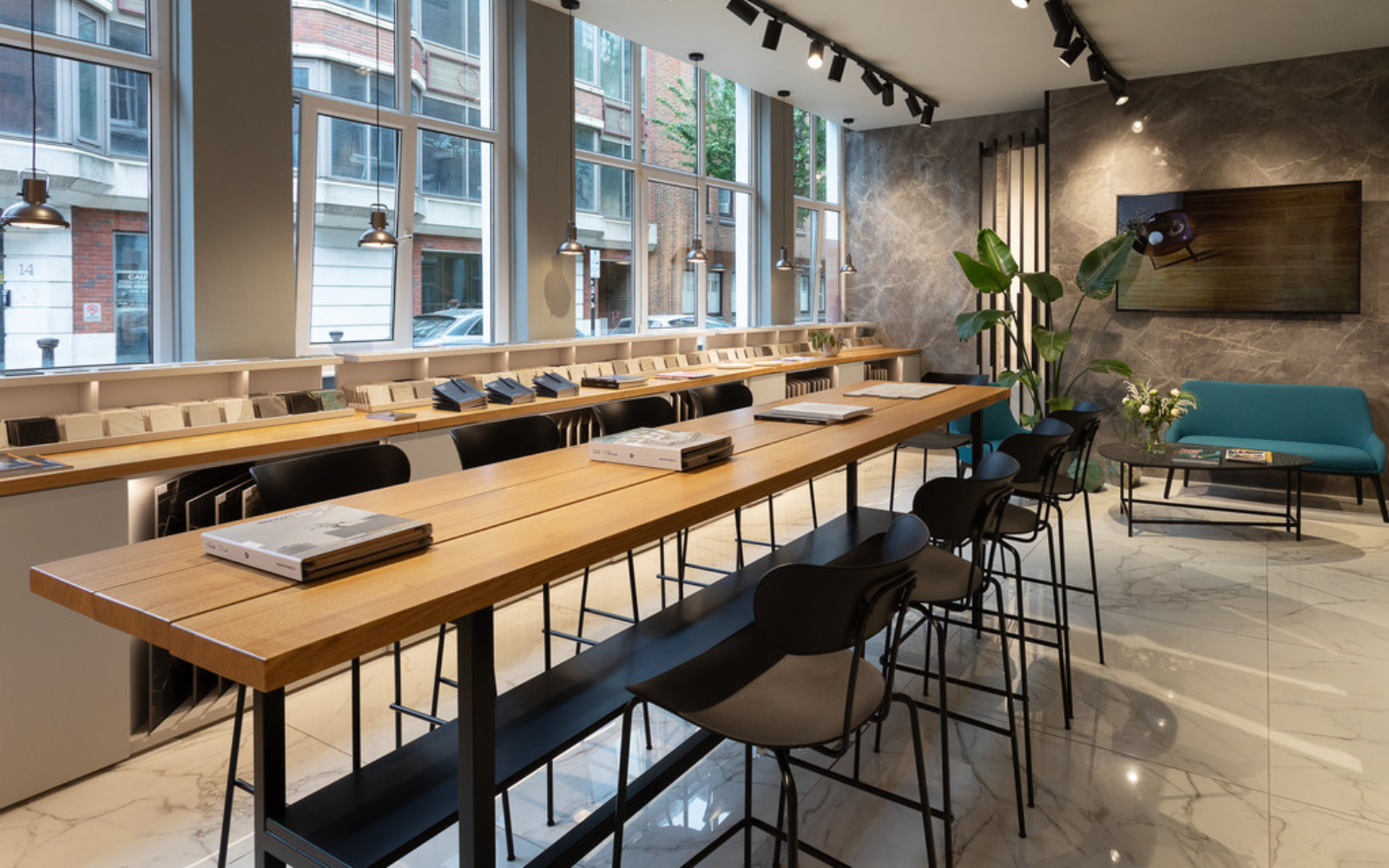

The experts, from left: Jennifer de Vere-Hopkins, Associate Director Jestico + Whiles, Kay Curtis, Architect HKS, Portia Leung, Lead Interior Design OBMI, Sean Kennard, UK Sales Manager Atlas Concorde, Trevor To, Senior Associate and Europe Regional Hospitality Leader Gensler.
Seated in the beautifully tiled London studio of Italian ceramic and porcelain specialists Atlas Concorde, the roundtable conversation began with introductions that made it very apparent (as if we weren’t already aware!) we were among individuals clearly qualified to discuss the concept of capturing local authenticity in global projects. As the design experts shared their own international origins and recent overseas (or cross-border) hospitality projects, nearly every continent was mentioned, along with striking examples of project research.
Sophie Harper: It’s really nice that we have such an international crowd here because it’s great to hear all your worldly perspectives. So I’d like to ask, how much research goes into projects that are in destinations that you aren’t familiar with?
Jennifer de Vere-Hopkins: Speaking for Jestico + Whiles, research is a huge part of discovering a new project. We don’t want a design to be pastiche and we don’t want to impose our idea of a place on to somewhere. For example with the W Edinburgh, we were really careful not to put tartan and fudge everywhere, but it was actually quite a challenge to design for somewhere that’s in your backyard because you have to dig deeper to find things that spark something new. So we looked at the geology of the city.
“You don’t have to directly reference something to appreciate its relevance…but it forms the guiding principle”
Edinburgh is built on a volcanic past and some of that geology came into our design, so there’s this enormous rock bar. We also looked to historical characters like the Picts — Scottish predecessors who used to paint their faces blue using a plant called woad. As for the hotel entrance, it’s a hero moment for us: a wall of unicorn heads. Why? Because the unicorn is the national symbol of Scotland. We also looked at the Loch Ness Monster (Nessie) and other mythical themes, but chose not to directly reference this.
You don’t have to directly reference something in a space to appreciate its relevance. The extensive research is part of building the relevant design story. All these super fascinating elements we discovered, you might not see them as a guest who goes into the hotel, but, for designers, it forms the guiding principle that tied us back to Edinburgh and to a story about Scotland which not everyone knows.
Trevor To: We recently worked with the W brand in Egypt on a hotel and branded residences development, which was the first time they asked us to create something in this region. So, because Gensler is a big organisation, we first looked in-house to find out if there is anyone from that country in our office. Funnily enough, there is a girl who worked in our London team whose family literally live two blocks away from the site and so we got all this local intelligence and insight, which was incredibly handy.
From the first-hand information, we then started to research deeper into topics or ideas that came up to build that design narrative; including looking at the social and physical geographies of the place, iconic symbols — like the pyramids in Egypt, but also design and craft aspects such as local textile and tent making, or Egyptian jewellery making which utilises unique alloy soldering. When we pick all these things out, okay, as Jennifer said, it’s not necessarily immediately relevant, but then when we started looking at the architectural design, we gradually look back to all the inspiration and see how we can connect them.
One thing we found, which is really cool, is there is an Asian Horus Falcon that features in Egyptian mythology, which the building form actually started to look like. So then we started to think of the shading, can it be like the feathers? So a local reference is not always that literal, but the analogy helps us designers to build the story and present something that is intrinsic to the culture and not just a pyramid, obelisk, or Egyptian gods reference…
Portia Leung: In doing the research, you keep finding things to provide that localised context. At OBMI, we focus a lot on the storytelling; the brand’s motto is Architects (or Designers etc) ‘of Storied Places’. Storytelling is what we deliver to the client, so we have to set up a very fun story.
“We are not painting a picture of geographical context…we are weaving every bit of research like a thread — to create a fabric”
We have a contextual handbook for every project, which includes the social, the historical, and also the physical, as well as sub-topics, such as climate, the national flower, animals, topography, human context — age, immigration etc. We are not painting a picture of geographical context onto a project, we are weaving every bit of research like a thread — to create a fabric.
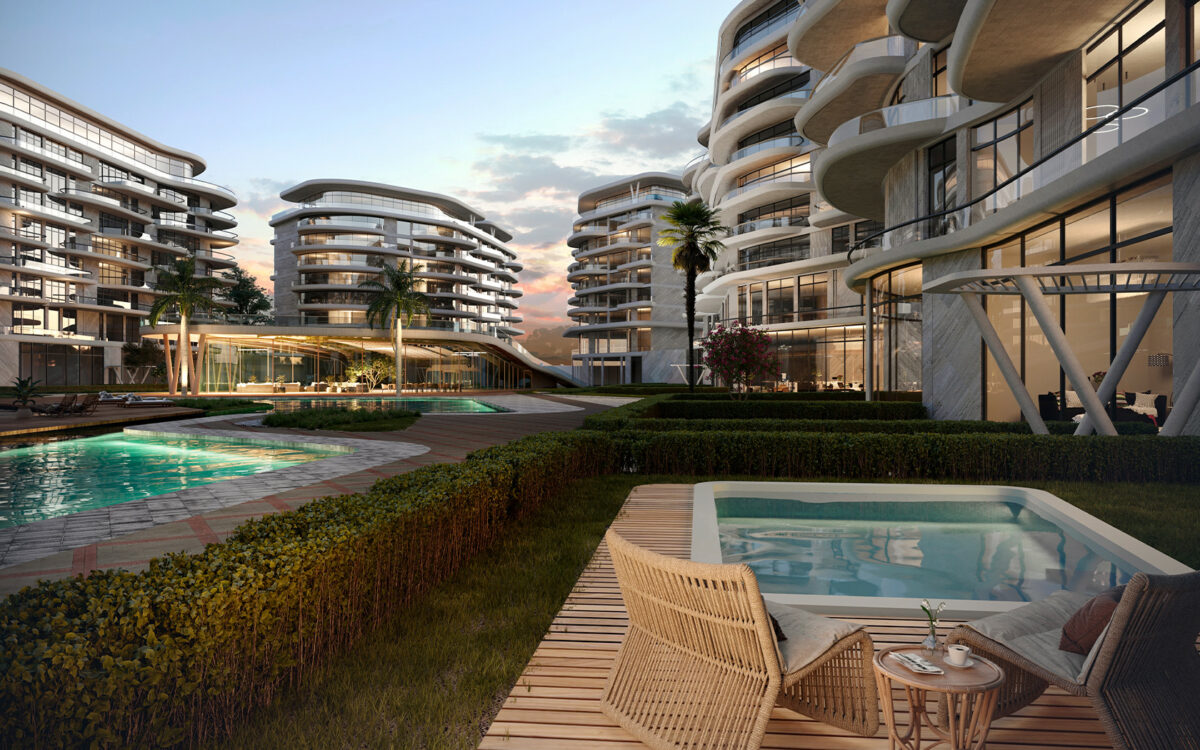
W Cairo Residences | Image credit: Gensler
Sophie: It’s interesting that you talk about the culture of the community, whether it’s differing age groups or ethnicities that are present, because I always think that it must be incredibly difficult to actually pin down who the local community is — you can’t put them in one box.
Portia: This is something we have to try to understand, for example, we have a Vietnamese hotel project and we discovered that, historically, it was a French colony, and the French immigration influenced the culture; they have different coffee, they have different architecture, and we have to understand this background to design authentically for the region. Understanding why somewhere has a particular cuisine or coffee will also inspire F&B choices too, so it goes further than the aesthetic design.
Kay Curtis: Research is one of the most important aspects of the work and also the most exciting to me, because it means that it’s a new, fresh project. HKS always start with as much research as we can on the vernacular architecture of the place — understanding how design has worked there historically — which also comes along with sustainability benefits as well. In our studio, the phrase ‘contemporary but rooted‘ has almost become a joke because it is so integral to the way that we approach design. Then we refer to our Nature of Place book which lists all the different points to investigate, such as what an area’s main export is.
Like Jennifer and Trevor said, something may not always sound like it’s going to mean anything, but on a feasibility study that I recently did for a Greek project we found out that the region was known for its honey production, which tied into Greek mythology; honey was considered the ambrosia of the gods, so we really started to weave and build this story that ‘this is the place that the gods come to play’. You really do find those influential details in unexpected places sometimes.

Four Seasons Sharm El Sheik | Image credit: HKS
Sophie: How does materiality play into the authentic design of different projects? Are there cultural influences that have to be taken into account?
Sean Kennard: For us manufacturers, it can be a big challenge. You have to have a range as vast and as comprehensive as possible for every market. But of course, offering everything is absolutely impossible. The importance is in respecting the local flavour, i.e. the traditions and culture. Atlas Concorde has an in-house team that does a lot of research into the trends and unique differences of geographical areas.
Sophie: What does everyone find in terms of sourcing materials? Do you stick to the project’s location when you’re looking?
Trevor: It varies from region to region. We have a material library and we have the Gensler product standards. By default, we look at products that can achieve certain requirements. That said, sometimes it is difficult in locations because of logistics and import duties etc. There are often factors that prohibit us from using certain things. We do talk to our local partners, whether it is the contractor or the consultant, to understand what’s locally available, what’s achievable, and then we often play with our concept to make it happen.
Portia: At OBMI, we especially like to focus on the local artists because they will use local materials and will be technical specialists. For general materials, because we have to meet with a certain standard or specification, we mainly use known suppliers; we have to secure a certain quality and people have to know them and trust them.
“Creativity relies on freedom of thought and the expansion that comes with going out of your normal day-to-day”
Sophie: Trevor and I were talking about the fact that you don’t travel so much now since COVID and that it can be beneficial to you because it cuts down on a lot of time wasted travelling. But I wonder how helpful it is actually going out to see different projects?
Portia: It is definitely better to go. Sometimes you are constrained by budget and time but if you go you can have a more panoramic view of the place and its culture.
Kay: I definitely agree that it’s better to travel and see the place. Even if it’s a city you’ve been to before, different neighbourhoods can even have completely different cultures, different activity going on, different types of people living there… You will notice so many different things about a place, even if you’ve previously visited as a tourist or you’ve gone somewhere nearby for a different project. Those micro climates of culture, those little bubbles can really be so different. What one area has, somewhere else might not have, and it might be an opportunity to fill a gap.
Jennifer: That really speaks to, I think, the main reason why you would physically go anywhere, which is to create a human connection to a place or a group of people. We can perform our job functions remotely, that’s clear, but it’s more about all of the other peripheries that add up to something greater. Creativity relies on freedom of thought and the kind of expansion that comes with going out of your normal day-to-day. It can be as simple as going to a different hotel every time we go abroad and you learn something about how you use a hotel room — or how you shouldn’t design a hotel room.
Kay: In our design process, we really think through that emotional response to a space and of the guest as they go through different spaces. What do we want the guest to feel when they enter the lobby versus what do we want them to feel when they enter their room? And, a lot of the time, those aspects are based on the location and vibe of the hotel — why has someone travelled there, whether they are a business traveller or a couple on their honeymoon.
Sophie: How do you try and cater to everyone that might visit a project?
Jennifer: I would say that you can’t satisfy everyone. But that’s the point, because that takes us back to the days when hotels were trying to be everything to everyone and nothing to no one — anonymously reliable. But now it is about trying to capture that local authenticity, through the design and through the people that work there, as they have an enormous part to play in setting the authentic atmosphere of a hotel too.
Throughout the roundtable discussion, it became evident that capturing local authenticity in global projects is a nuanced process that extends far beyond surface-level design choices. Our wonderful experts emphasised the importance of deep research — whether through historical and cultural analysis or from first hand experiences — to create spaces that feel intrinsically connected to their surroundings. While literal references to a destination’s symbols and traditions can be effective, the real artistry lies in weaving these elements into a cohesive narrative that resonates with both locals and visitors.
Ultimately, designing with authenticity requires curiosity, adaptability, and a respect for the communities and histories that shape a place. As global projects continue to evolve, this thoughtful approach ensures that design remains meaningful, rooted, and reflective of the world’s rich diversity.
Atlas Concorde is one of our Recommended Suppliers and regularly features in our Supplier News section of the website. If you are interested in becoming one of our Recommended Suppliers, please email Katy Phillips.
Main image credit: Atlas Concorde






